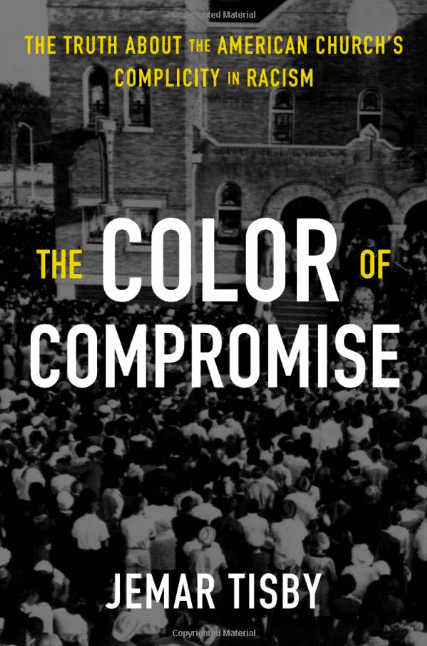 It is rare that a post on this blog focuses on its blurbs, but today is that day. An African American PhD student of history, Jemar Tisby, has a new book out called The Color of Compromise. Good title, clever title, one that grabs my interest, one that makes me wonder if the book is about racism and makes wonder if compromise is or has a color.
It is rare that a post on this blog focuses on its blurbs, but today is that day. An African American PhD student of history, Jemar Tisby, has a new book out called The Color of Compromise. Good title, clever title, one that grabs my interest, one that makes me wonder if the book is about racism and makes wonder if compromise is or has a color.
The subtitle is not so subtle: The Truth about the American Church’s Complicity in Racism.
The book comes from Zondervan, not a publisher known for venturing into the field of race and racial politics.
The blurbs struck me, so a word about blurbs in general. I pick up a book from some publishers — you know who you are — and there are a dozen to two dozen blurbs, all by the same names from the same organization saying how great the book is. (Did I mention Crossway and the Gospel Coalition names?) It’s tiresome. It’s groupthink. It’s tribal.
I like blurbs from different angles because I then know the author is seeking peace and reconciliation; the author is crossing boundaries; the author is not a tribalist but offering a challenge for more to see his or her point of view.
This is the case with Tisby’s The Color of Compromise. Blurbs are from Thabiti Anyabwile, a Gospel Coalition name; from a professor at Valpo named Heath Carter; from Calvin progressive thinker Kristin Du Mez … now the author and publisher have my attention. To get Anyabwile and Du Mez together something has to be going on here. Add in Alexander Jun and Soong-Chan Rah and an identity politics author for The Washington Post, a Duke professor of ethics and Jonathan Wilson-Hartgrove … well, I can’t afford now not to read this book.
Join me, will you?, in reading this book.
O, and Lecrae writes the foreword, with this opening:
On July 4, 2016, as my social media feeds filled with images of American flags and friends backyard barbecues celebrating America’s independence, I took to Twitter and posted a picture seven African Americans picking cotton in a field with the following caption: “My family on July 4th 1776.”
While the tweet received more than 15,000 retweets and 23,000 likes, there were numerous tweets frustrated by the fact that I chose to post such an image and caption on the day celebrating America’s independence. One follower questioned my patriotism; another accused me of making every issue a race issue instead of a gospel issue. From where I sat, I was simply telling the truth about our country’s complicated, imperfect history on a day when people were celebrating a simplistic, incomplete narrative about our country.
Though those responses frustrated and grieved me, they didn’t surprise me. My work as a black hip-hop artist with an audience in white evangelicalism has shown me the tension that exists between black and white America, specifically when it comes to the history of the white evangelical church in America.
That’s why I’m excited that this book by my friend and brother Jemar Tisby is in your hands. Throughout its pages, Jemar carefully surveys the history of the white church in America and its complicity with racism. As a student of history, he’s careful with stories and data, seeking to let history speak for itself by boldly telling the truth and helping us connect the dots between events over the past 400 years of our country’s history.














